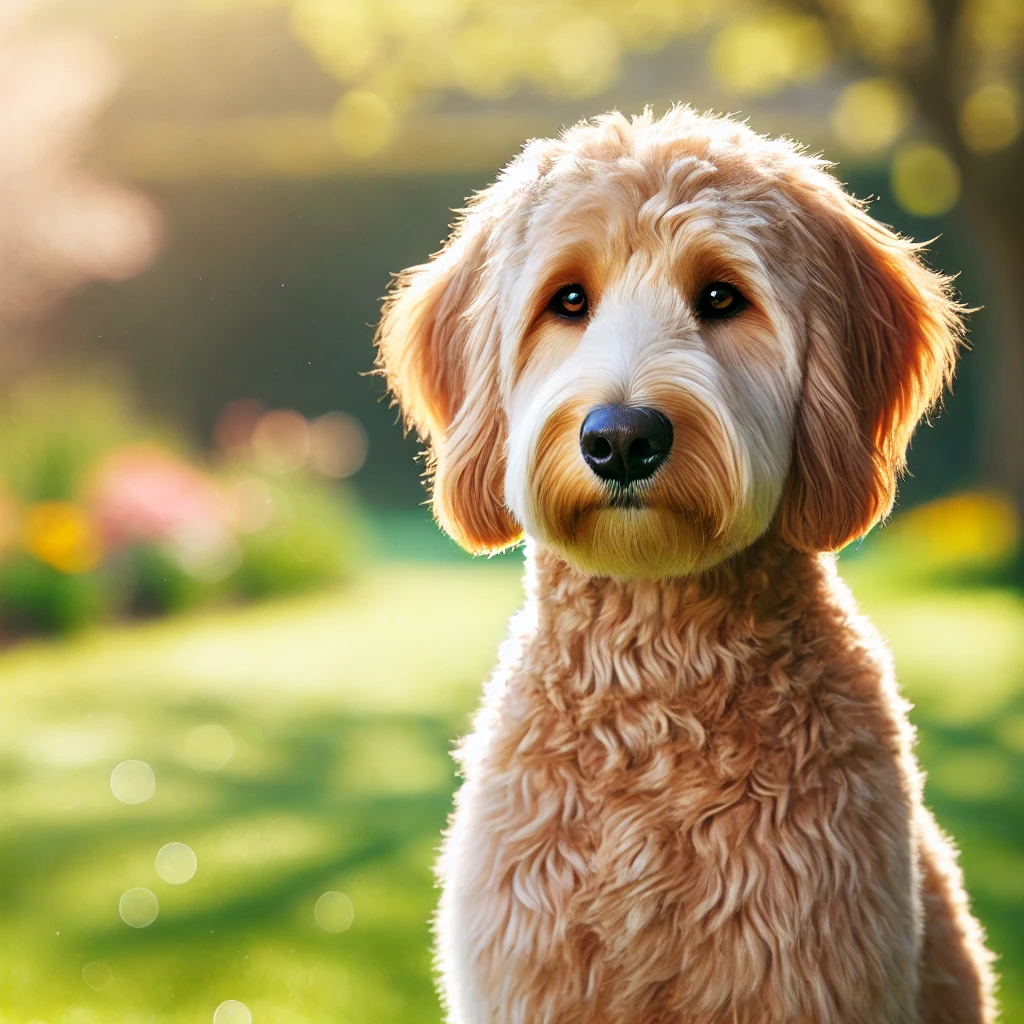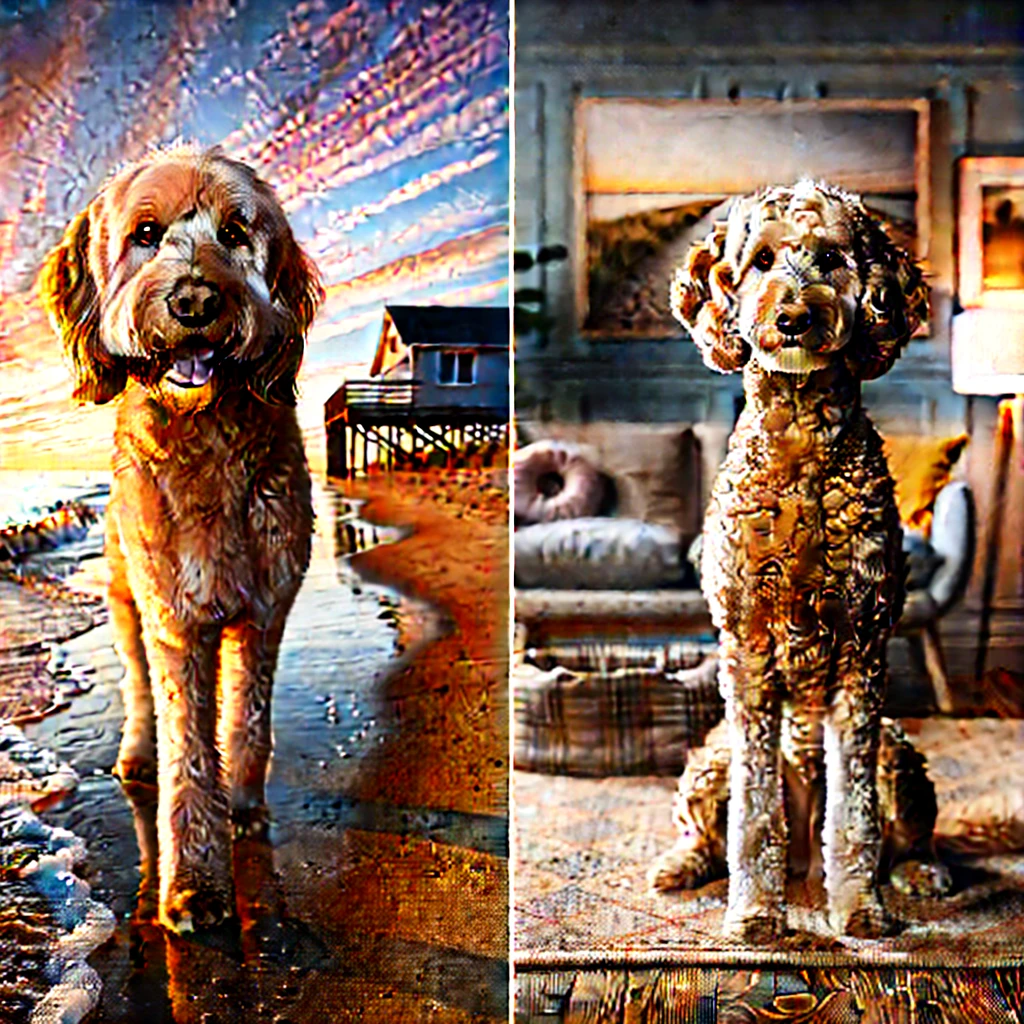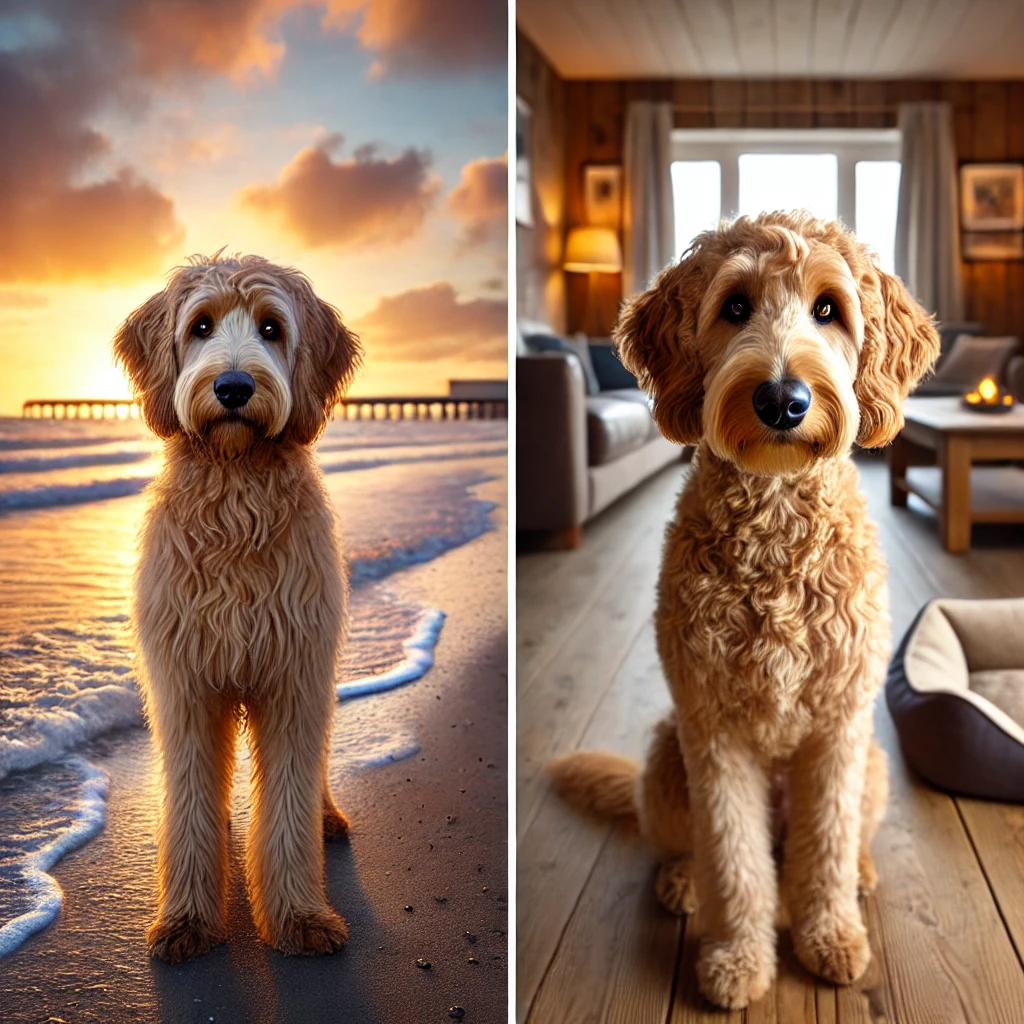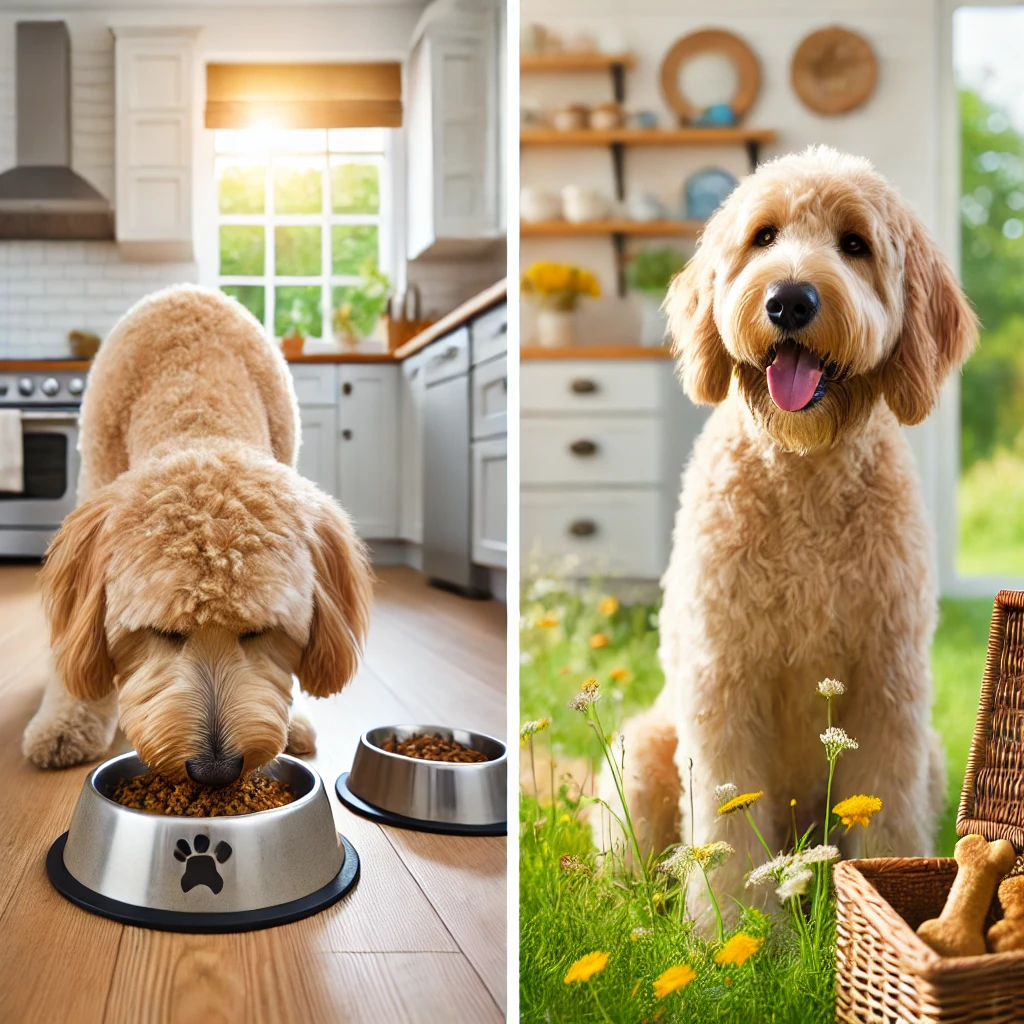When I first met a straight haired Labradoodle, I was honestly surprised. Most people picture curly coats when they think of Labradoodles, thanks to their Poodle heritage, but not all of them look that way. Some lucky pups inherit the straight coat from their Labrador Retriever side, giving them a much sleeker, more easygoing appearance. I still remember running my hands through one’s soft, flat fur—it was like touching a plush blanket with a hint of bedhead charm. These dogs may not be what you’d expect, but their unique coat makes them stand out.
What’s even more interesting is how that flat coat isn’t just about looks. A straight haired Labradoodle may shed more and be less hypoallergenic than their wavy or curly cousins, which is important if someone in your home has allergies. Their coat is known as a “hair” type, not fleece or wool, so it might need different grooming routines. But don’t worry—they still have that friendly, intelligent, and affectionate personality we love about Labradoodles. Honestly, if you’re looking for a dog with charm and a bit of an unexpected twist, these flat-coated companions are the real deal.
Can a Labradoodle have straight hair?
Yes, Labradoodles can absolutely have straight hair, and this feature is especially noticeable in first-generation (F1) pups. From what I’ve seen at grooming sessions and among owners, many puppies start off with fine, soft coats that later shift into adult textures. Some of them end up with a coat that’s coarse or even wiry, different from the usual curly look most people expect. This kind of coat is often referred to as a hair type, unlike the fleece or wool coats that are more typical in multi-gen Labradoodles. If your pup’s genes lean more toward the Labrador side than the Poodle, chances are you’ll see this coat type develop.
Straight coats are not just about looks — they can also mean more shedding, which is something to be aware of if you’re sensitive to dander. Based on what’s shared on platforms like CNR Farms and The Labradoodle Site, this kind of coat can bring more allergy symptoms for some people. I’ve had friends who didn’t expect this because they assumed all Labradoodles were allergy-friendly. So, if you’re looking for a pup and want to avoid issues with shedding or allergens, it’s good to understand how genetics plays a role in the final look and feel of your dog’s coat.

Table of Contents
Breed Overview
| Aspect | Details |
|---|---|
| Breed Type | Hybrid, mixed breed of Poodle and Labrador Retriever. Often seen with medium to long, scruffy, high-shedding coat. |
| Coat Characteristics | Can feel wiry, ranging from straight to slightly wavy. Common coat colors include red, chocolate, cream, black, tan, blue, silver, chalk, cafe, parchment, lavender, gold, apricot, phantom, brindle, sable, parti, tuxedo, and abstract. |
| Size & Weight | A Standard Labradoodle typically stands 21 to 24 inches tall and weighs around 50 to 70 pounds. |
| Temperament | Known to be intelligent, gentle, affectionate, and playful. Forms a strong attachment and may experience separation anxiety if left alone too often. |
| Energy & Exercise | High energy levels; requires at least one hour of exercise daily. |
| Life Expectancy | Typically lives 10 to 15 years. |
| Health Issues | Prone to hip and elbow dysplasia, patellar luxation, eye issues like retinal dysplasia, cataracts, PRA (progressive retinal atrophy), skin allergies, food allergies, gastrointestinal issues, hormonal diseases, and age-related cancer. |

How much does a straight hair Labradoodle cost?
When I first looked into getting a straight-haired Labradoodle, I was surprised by how the cost can vary quite a bit. Unlike the more common curly-coated or wavy-coated types, straight-haired ones are often seen as less desirable by those looking for a low-allergen dog, which means they’re generally a bit more affordable. Still, the price often depends on a few things — the breeder, the dog’s size, and even the coat type. Most of the time, you’ll see these pups go for $1,500 to $2,000, but if they come from champion bloodlines or are show-quality, that number can climb to $3,000 or even $5,000. I once spoke with a breeder who mentioned how they typically try to produce curly coats, making straight ones slightly rarer and even more special in their own right.
That said, you might also find older dogs through adoption — especially from rescues or shelters — where the fees are way lower, maybe around $200 to $500. I actually met someone at a local shelter who adopted an adult Labradoodle with a gorgeous flat-coated look for only $300. People often choose the curly type because they’re believed to be more hypoallergenic, but if that’s not a concern, a straight-haired Labradoodle could be the perfect fit. When you look at the full picture — from price to the joy they bring — these pups are worth every penny. Whether you’re paying top dollar or going the adoption route, you’re still getting a lovable, intelligent dog. Just be sure to look into the kind of puppy you want, understand what you’re paying for, and pick the direction that’s best for your family.
History and Generations of Straight-Haired Labradoodles
The Origin of Labradoodles
The Labradoodle originated in the 1950s when breeders sought to create a dog that combined the Labrador Retriever’s friendly nature with the Poodle’s low-shedding qualities. The idea was to make a dog that was not only intelligent and loving but also suitable for people with allergies. This resulted in a hybrid breed that has gained popularity over the years due to its trainable and affectionate temperament. The breed comes in different coat types, one of which is the straight-haired version.
The Role of Generations in Labradoodle Coat Types
Labradoodles come in different generations, each having specific traits inherited from its parent dogs. For example, an F1 Labradoodle is a 50% mix of Labrador Retriever and Poodle, while an F1B Labradoodle is more Poodle-dominant, with 75% Poodle genetics. These generations impact the coat type, with straight-haired Labradoodles often appearing in the F1 generation. Successive generations, like the F2 or F3, tend to have more curly or wavy coats. The hair coat found in straight-haired Labradoodles is easier to maintain, as it requires less grooming compared to the denser wool or fleece coats.
In later generations, such as F2B or F3, the chances of getting a straight-haired Labradoodle become lower as the genes lean more toward curly or wavy coats, which are more desirable for their hypoallergenic properties. The coat type also depends on the breeding strategy. Breeders often aim to produce specific coat types to meet the needs of owners, whether it’s for reduced shedding or a specific look. Therefore, knowing the generation and genetic mix of a Labradoodle is crucial when choosing one, especially for those who may prefer a low-shedding, straight-haired companion.

Genetics of Labradoodle Hair
The genetics of Labradoodle hair is quite fascinating, especially when we talk about straight coats. The coat type in Labradoodles is determined by the genes inherited from their Labrador Retriever and Poodle parents. In the first generation (F1), there’s a 50-50 chance of a Labradoodle inheriting the Cu Locus gene for a curly coat from the Poodle parent. If the Labradoodle doesn’t inherit this gene, it is more likely to have a straight coat, similar to its Labrador parent. However, as you go further in the breeding line, such as F1B, F2, or F2B, the chances of getting a straight coat decrease, since most breeders prefer the low-shedding Poodle coat.
When it comes to straight haired Labradoodles, they are quite rare, and breeders often control this trait. For example, in an F1 generation, there is still about a 50% chance that a puppy will have a straight hair coat due to the mix of genes from both parent breeds. However, as you go into later generations like F1B or F2, straight coats are less common because the goal is usually to avoid shedding and promote the curly coat, a trait inherited from the Poodle. Interestingly, DNA testing can help predict the coat type, but genetics can still be quite unpredictable.
Do flat coated Labradoodles shed?
Straight-haired Labradoodles are a bit of a surprise for many who are used to the usual curly or wavy coats. Unlike their curly counterparts, these dogs may shed a little more, which is something to consider if you have allergies. Their coat is a hair type, which is different from the wool-type coat seen in other Labradoodles. Because of this, straight-coated Labradoodles tend to shed a bit more, especially during seasonal changes like in spring and fall. I’ve noticed that while their coat may not be as hypoallergenic as the curly-coated types, proper grooming can make a significant difference. Regular brushing is important—unlike the daily brushing curly-coated Labradoodles require, these flat-coated beauties only need a weekly session to manage their loose fur.
Having a straight-haired Labradoodle is a great choice for those who are willing to put in some effort into brushing and grooming. While shedding may occur, it’s easy to manage by simply keeping up with the right grooming routine. They might not be as non-shedding as their curly cousins, but with some care, the shedding can be minimized, and their friendly personality and low-maintenance coat will still make them a great pet for those sensitive to allergies. Just be sure to brush out the loose fur regularly and keep their coat looking healthy.

Why is my Labradoodle hair not curly?
Labradoodles can have different types of coats, and not all of them are curly. The reason your Labradoodle’s hair isn’t curly likely comes down to the genetic mix between the Labrador Retriever and Poodle. While many Labradoodles inherit the curly coat from their Poodle parent, some may end up with a wavy coat or even a straight coat, especially if they take after the Labrador side of the family more. The genetics of coat type can vary, and it’s all about which genes are passed down.
Another factor could be that your Labradoodle’s coat is simply evolving as they grow. As puppies, they might have a curly coat that becomes wavier or straighter as they age. If you’re concerned about their coat, grooming regularly can help keep it healthy, whether it’s curly, wavy, or straight. It’s important to know that every Labradoodle’s coat is unique, and just because it isn’t curly doesn’t mean there’s anything wrong with your pet!
Get For Free The Last Siberian Chapter 5 The Long March
Get For Free The Last Siberian Chapter 4 Maya Arrives
